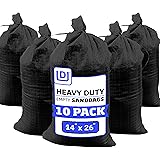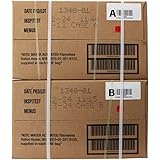Hey there, fellow preppers! If you’re like me, you’re always on the lookout for the best ways to stay powered up when the grid goes down. Solar power has been a game-changer for preppers, and today, I want to share with you some killer solar power solutions that I’ve found to work like a charm. Let’s break it down into five key areas that you’ll want to consider. Trust me, these tips will have you charged up and ready to go in any situation!
Choosing the Right Solar Panels
Understanding Types of Solar Panels
When I first got into solar power, I was overwhelmed by all the choices. But that’s the first step, my friend: figuring out what kind of solar panels you need. The two main types you’ll come across are monocrystalline and polycrystalline panels. Monocrystalline panels are more efficient and have a longer lifespan, while polycrystalline panels are generally cheaper but less efficient.
For preppers, efficiency is key. You don’t want to take up a ton of space for just a little power, so I lean toward monocrystalline when I can. They can produce more energy in less space, which is critical when you’re trying to make the most of limited resources.
Also, do your homework. Look for panels with high ratings. It’s essential to balance cost with quality. I learned that the hard way with my first setup, which didn’t last as long as I thought it would!
Size Matters: How Much Power Do You Need?
Determining how much power you need is another vital step. It’s tempting to just grab a bunch of panels and be done with it, but that could lead to some serious issues later on. Start by listing all the devices you plan to power and their wattage.
I made a little chart for myself, and it helped me visualize my needs. From lights to fridges, every watt counts. Once you know how much power you need, you can start calculating how many solar panels to buy. Don’t forget about the cloudy days; having a bit more capacity can save your bacon!
If you’re going off-grid, it’s also wise to consider future needs. Maybe you’re planning to expand or bring in more gadgets. I always think one step ahead because it’s not just about today but preparing for tomorrow.
Portable vs. Fixed Solar Panels
One decision I’ve had to make is whether to go for fixed solar panels or portable ones. If you’re someone who loves being on the move, portable panels are totally the way to go. They’re lightweight and can be set up almost anywhere.
== > What if ... Get a FREE Subscription to PREPARE
However, I’ve also learned that fixed panels can be much more efficient over time. They’re a more permanent solution that, while not as flexible, can provide more consistent energy. I have both types: portable for camping and fixed in my home backup system. It really just depends on your unique prepping situation.
Just remember to assess what your primary needs are. Sometimes the best solution is a hybrid approach, giving you the benefits of both worlds!
Investing in the Right Batteries
Types of Batteries for Solar Systems
When it comes to prepping with solar, solid battery storage is just as crucial as the panels themselves. Trust me, you don’t want to be left high and dry just because your energy source was great, but your battery couldn’t keep up.
Lead-acid batteries have been around forever, and they’re cost-effective, but I’ve noticed they don’t hold up as long when continually cycled. Lithium-ion batteries, while more expensive upfront, last longer and charge faster. I switched to lithium-ion, and it was worth every penny!
Choosing the right battery comes down to your budget and how you plan to use your solar setup. I recommend doing thorough research and selecting batteries with good reviews, and matching them to the solar panels you’ve chosen.
Battery Capacity and Management
Understanding battery capacity is essential. This is where I got caught up early on. Just because a battery says it can hold a certain amount of power doesn’t mean it’s suitable for your needs. You want batteries that can handle deep discharges and have a good amp hour rating.
Battery management systems (BMS) are also vital. They help protect your investment by preventing overcharging and excessive discharging. I learned the hard way by not having a good BMS, resulting in some fried batteries. Make sure you have a high-quality system in place!
Monitoring your batteries regularly can give you peace of mind. I check mine every few weeks to make sure everything’s functioning smoothly. Keeping an eye on your setup can save you a lot of headaches down the line.
Connecting Batteries to Your Solar Array
When connecting your batteries, the right configuration can make all the difference. I had to learn about series vs. parallel connections, which can impact the how well everything operates together.
In series, you get higher voltage, which can help with efficiency, while parallel connections provide more capacity at the same voltage. Depending on your power requirements, one method may suit your needs better than the other. I mix and match, depending on whether I’m surfing the web or running power tools!
Don’t skip on the cables and wiring either. Using the right gauges and keeping everything tight and secure can prevent messy fuses and potential hazards. Trust me on this one; you don’t want to be dealing with those problems in the dark!
Setting Up Your Solar System
Drafting Your Solar System Layout
Before jumping into installation, I found that sketching out a layout can save you a lot of time and effort. It gives you a clear picture of how everything fits together. I spent a couple of hours on mine and it was a total lifesaver!
Consider where the sun hits your property. Ideal spots will maximize sunlight and ensure you can generate enough energy over time. Planning where to place your batteries is also crucial—keep them in a cool, dry place. Heat can affect their overall lifespan.
Incorporating as many details as possible in your layout will help when it comes time to put it all together. Just take your time, and don’t rush the planning phase!
Get Preparedness and Self-Reliance Tips. Subscribe Now!
Installation: DIY or Professional?
This is a biggie. I’ve seen people try to tackle solar setups on their own without the proper knowledge and end up creating a mess. I definitely believe in DIY spirit, but be honest with yourself about your skills. Watching YouTube videos can help, but hands-on experience is where it’s really at.
If you’re unsure, hiring a professional can be worth the investment. They’ll have the knowledge and tools to set everything up safely and efficiently. I once tried to wire something myself, and let’s just say it didn’t end well. Do yourself a favor and get it done right!
In the end, the goal is to ensure your safety and efficiency. There’s nothing worse than a bad setup when the power goes out.
Testing Your System
After everything is installed, don’t just cross your fingers and hope it works! Take time to test the entire system before you actually need it. I recommend running your batteries down and then recharging fully to see how they hold up under stress.
Check all your connections, ensuring there are no loose wires or potential short circuits. It’s a bit laborious, but I promise it pays off when the lights don’t go out during a storm!
After a successful test, keep a close eye on everything in the first few months. It’ll help you spot any issues early on. Being vigilant early could save you from unexpected hiccups when you rely on your system down the road.
Maintenance and Troubleshooting
Regular Maintenance Practices
Just setting up your solar power system isn’t enough—you need to maintain it! I do routine checks about every six months. Cleaning the panels is a biggie; dirt and debris can block sunlight, reducing efficiency. A simple wash-down is usually all they need.
Keep an eye on the connections too. I’ve had trouble in the past when connections get loose over time. Tightening those up can improve performance. It’s like giving your system a little TLC!
Tracking your solar output also helps detect if something is off. A good monitoring system can alert you to drops in performance, so you don’t have to rely solely on your memory. You’ll thank yourself later for staying on top of it!
Troubleshooting Common Issues
Sometimes things don’t work as they should, and that’s okay! One common issue I’ve faced is battery not charging properly. First, I check if it’s connected right and if sunlight is hitting my panels. If that all looks good, I dig deeper into my system.
Another issue could be overheating. My panels once got too hot, and I had to ensure they were placed correctly and had proper airflow. Keeping everything in a cool spot will keep your system running smoothly.
Finding these problems early can save you time and money. I always advise everyone to have a troubleshooting guide handy or bookmark good resources online. It’s much easier to solve a problem if you know what to look for!
Knowing When to Seek Help
If you’re continually facing problems, it might be time to consult a professional. Sometimes systems can be complex, and without the right knowledge, attempting to fix them could do more harm than good. I’ve learned that the hard way!
Find local help who understand solar solutions. They can provide peace of mind, letting you know everything is functioning as it should. I once had a pro check my setup, and he made adjustments I’d have never thought of. It was worth every cent.
Ultimately, trust your instincts. Keeping your system running is critical, so don’t hesitate to ask for help when you need it!
Conclusion
And there you have it, folks! With the right solar power solutions, you can stay prepared for whatever life throws your way. Whether you’re home or on the go, solar power gives you the freedom to be self-sufficient, which is what prepping is all about. Remember, it’s a learning process, so take it one step at a time and don’t hesitate to reach out for help along the way. Happy prepping!
FAQ
1. What type of solar panels are best for preppers?
Generally, monocrystalline panels are favored for their efficiency and longevity. They might cost a bit more, but they generate more power in less space, which is crucial for preppers.
2. How do I determine the power needs for my solar system?
List out all your devices and their wattages. Calculate the total energy consumption, and consider adding a bit extra for any additional devices you might want in the future.
3. Why should I consider investing in lithium-ion batteries?
Lithium-ion batteries offer a longer lifespan and quicker charging times than traditional lead-acid batteries. Although they might be pricier initially, they end up saving you money in the long run!
4. What maintenance should I do for my solar power system?
Routine checks every six months are a good idea. Clean the solar panels of debris, tighten any loose connections, and monitor the system for any drops in performance.
5. When should I seek professional help for my solar setup?
If you’re facing ongoing issues or you’re unsure about maintenance or repair, it’s wise to consult a professional. They can often fix problems quickly and provide valuable advice to keep your system running smoothly.






